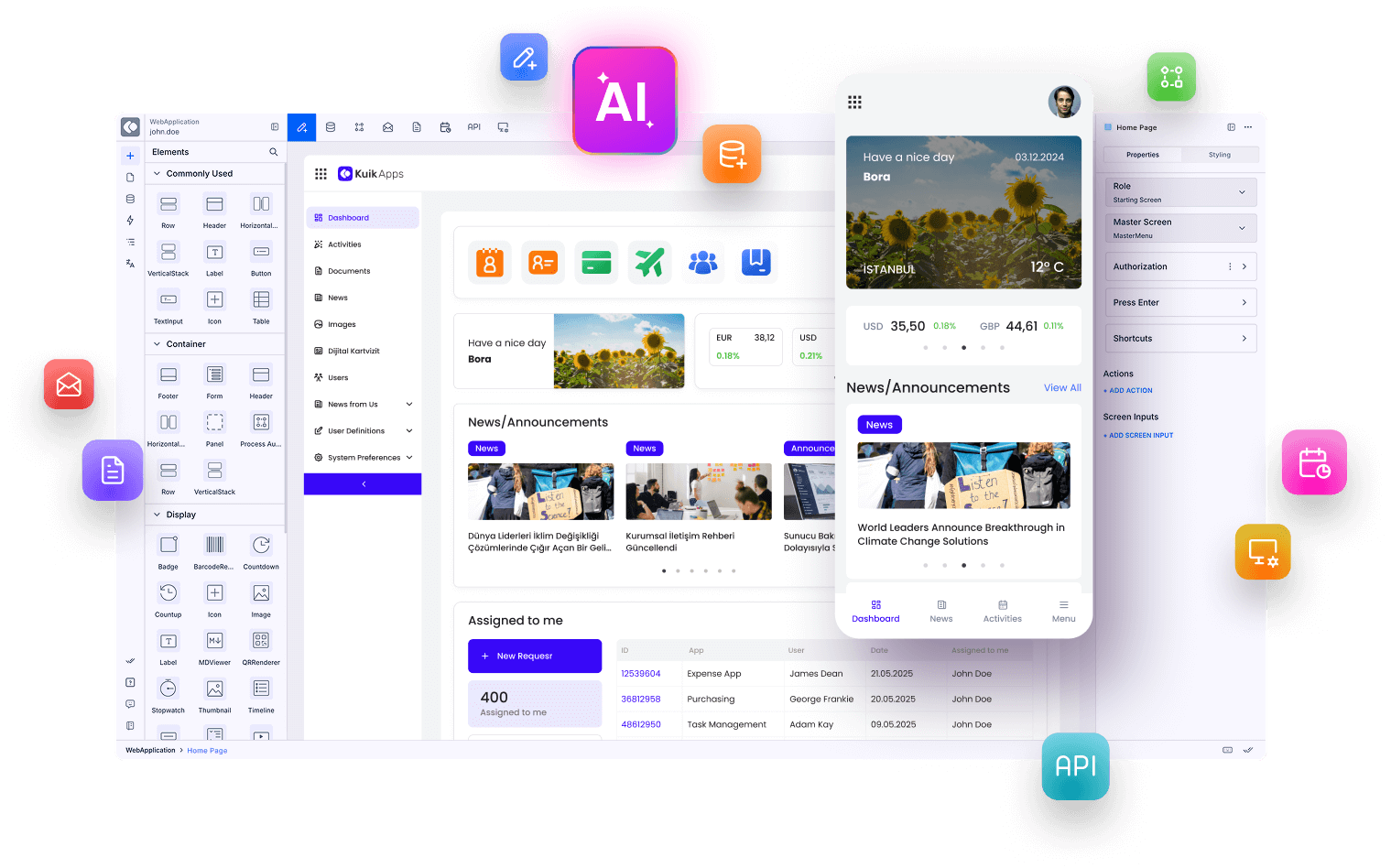While low-code development is gaining traction for accelerating and democratizing the application development processes, it is important to acknowledge model-driven development (MDD). It emphasizes creating software through abstract models by leveraging visual modeling tools and standardized notations.
The model-driven approach is a foundational concept that underlies low-code development platforms. Its emphasis on visual models and diagrams as the principal artifacts in the development process aligns with low-code platforms.
What is model-driven development?
Model-driven development (MDD) is a software development approach that relies on models as the primary tool for analyzing, designing, and implementing systems. It aims to simplify the complexity of software development by representing systems with visual drag-and-drop components, which are easier to comprehend, modify, and maintain compared to traditional code.
Model-driven application development (MDD) aims to complete each stage of the software development process quickly and cost-efficiently. It involves creating a model of the application first and then generating some or all of the software source code automatically based on the model. This not only streamlines the development process but also reduces the time and cost required to create the application.
What is model-driven architecture?
Model-driven architecture provides users with a visual interface to replace complex coding languages. The core idea behind MDA is to create a platform-independent model of the system, which can then be transformed into specific implementations for different target platforms.
Model-driven architecture enhances the interoperability and portability of applications across different platforms, improves the consistency and scalability of systems, and a significant reduction in development time and costs. By abstracting away from the complexities of specific technologies, MDA streamlines the software development process, making it more efficient and accessible.
Benefits of model-driven development
Model-driven app development offers a range of benefits that are unmatched by traditional methods. Some of these benefits include:
- Faster development
The model-driven approach is faster than traditional coding due to its higher abstraction level, standard templates, and processes to implement projects quickly. Once process models are created, they can be directly executed in the runtime environment, eliminating the need for additional coding.
- Better communication between business and IT departments
Model-driven application development sets a common language for business and IT departments since people can easily understand them regardless of their coding knowledge. Reinforcing such a collaborative approach also ensures that the final product aligns closely with business needs and user expectations.
- Reduced development costs
The use of MDD can significantly reduce costs by automating development processes, freeing up resources for other important tasks such as user experience design and market research.
- Compliance and documentation
MDD offers an effective solution to generate precise documentation from models, which is particularly beneficial for projects that require strict adherence to regulatory standards. This not only ensures consistency in documentation but also helps avoid errors.
- Enhanced-quality output
MDD helps reduce human errors that are common in manual coding by automatically generating. Therefore, you can achieve the optimum quality output with minimum human error.
Model-driven and low-code development tools
What we refer to as model-driven development actually forms the foundation for low-code development, which is a more popular buzzword compared to MDD. Low-code development platforms aim to enable quick app delivery by minimizing the need for traditional hand-coding. While these two are similar concepts, they are not necessarily the same thing.
As an example of the differences between model-driven and low-code development platforms, an article published in the journal Software and Systems Modeling states that “not all model-driven techniques aim at reducing the amount of code needed to implement software solutions, and not all low-code approaches are model-driven” (1).
Low-code platforms allow their users to develop applications via pre-built components and visual tools. They also offer the option to write custom code to provide more flexibility and satisfactory control. This makes them suitable for developing complex applications and integrations.
The growing popularity of low-code platforms makes them an appealing option, especially for citizen developers, business users with some technical skills, and IT professionals who want to speed up the development process.
Build scalable applications with Kuika’s low-code platform
You can use Kuika's low-code platform for rapid application development without compromising the quality or scalability of the final product. Whether you own a startup or a large enterprise, Kuika provides you with all the features that can help you create applications.
The one thing you need to do is choose Kuika to achieve success with your innovative ideas. Don't wait around when you spot a gap in the market - sign up to Kuika today. If you have no coding experience, you can benefit from our turnkey project service. Kuika's experienced team is here to provide you with expert guidance and support throughout your software development journey.
















